Abstract
We taught three mentally handicapped students to answer questions with verbal labels and evaluated the generalized effects of this training on their maladaptive speech (e.g., echolalia) and correct responding to untrained questions. The students received cues-pause-point training on an initial question set followed by generalization assessments on a different set in another setting. Probes were conducted on novel questions in three other settings to determine the strength and spread of the generalization effect. A multiple baseline across subjects design revealed that maladaptive speech was replaced with correct labels (answers) to questions in the training and all generalization settings. These results replicate and extend previous research that suggested that cues-pause-point procedures may be useful in replacing maladaptive speech patterns by teaching students to use their verbal labeling repertoires.
Full text
PDF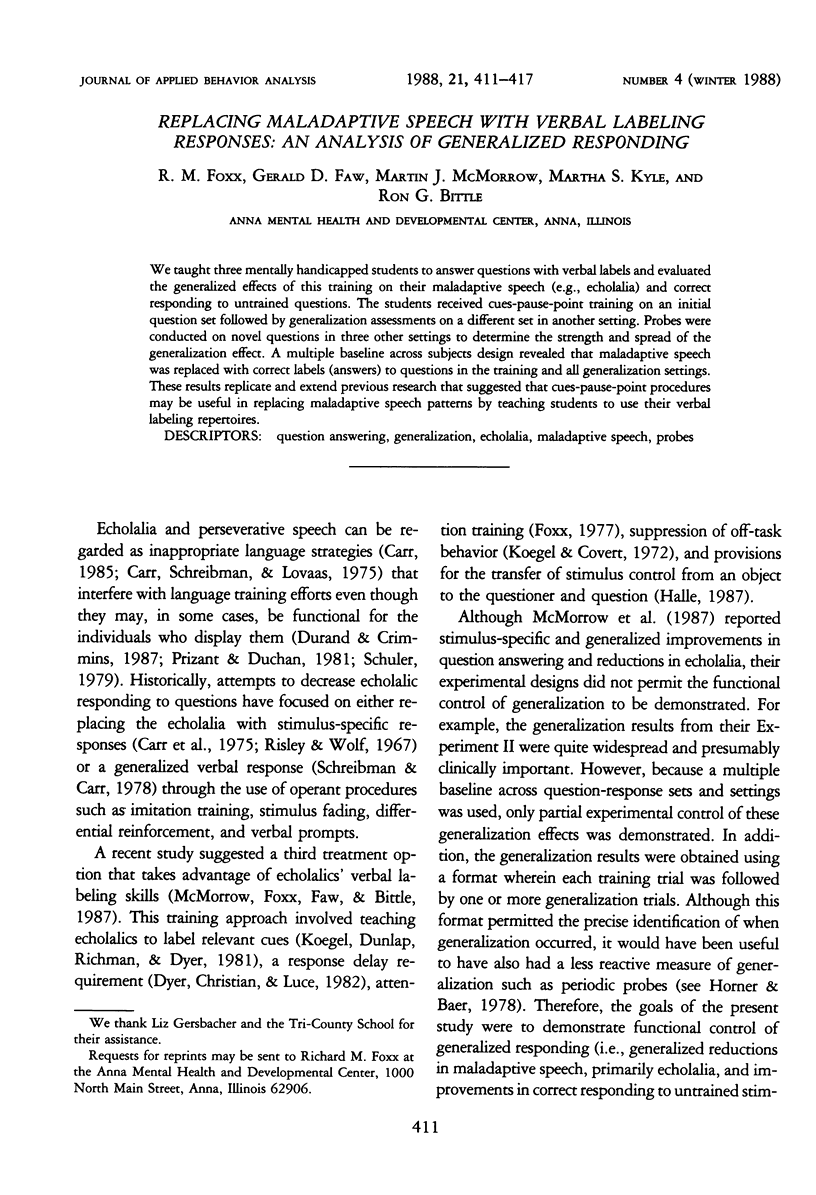
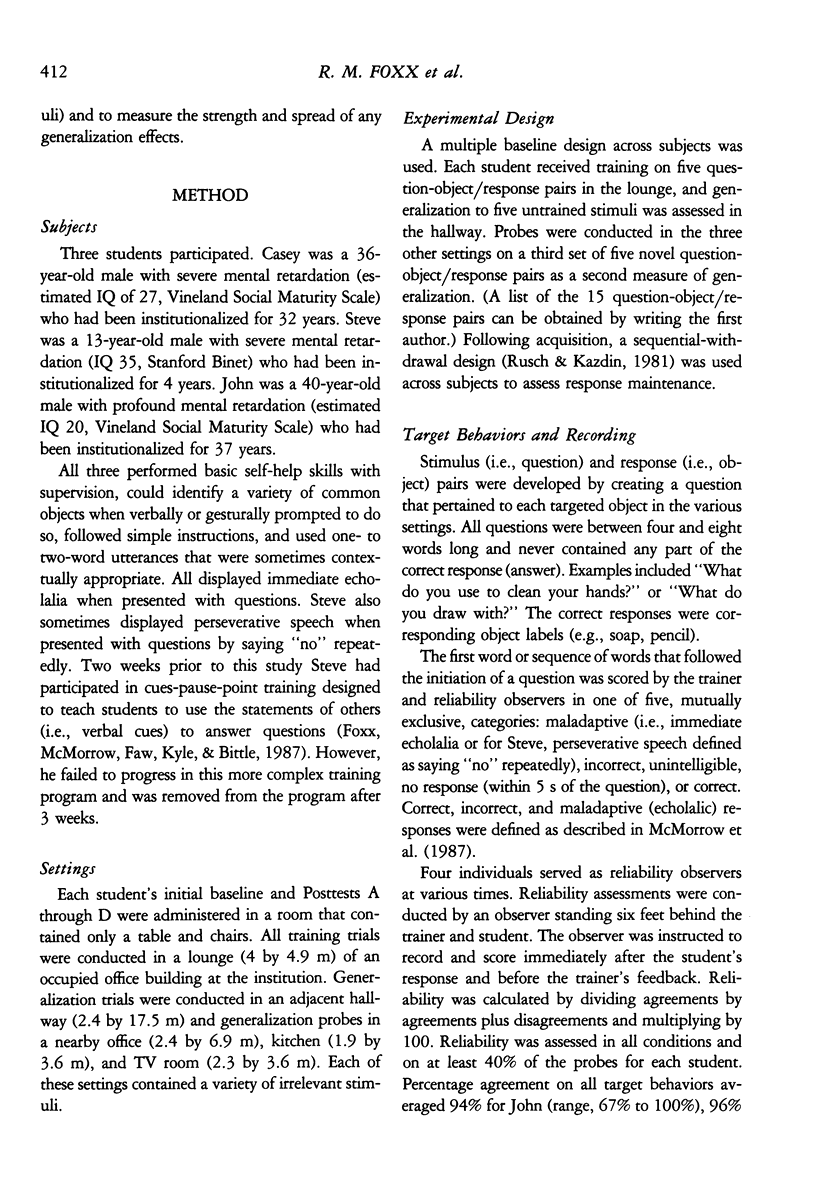
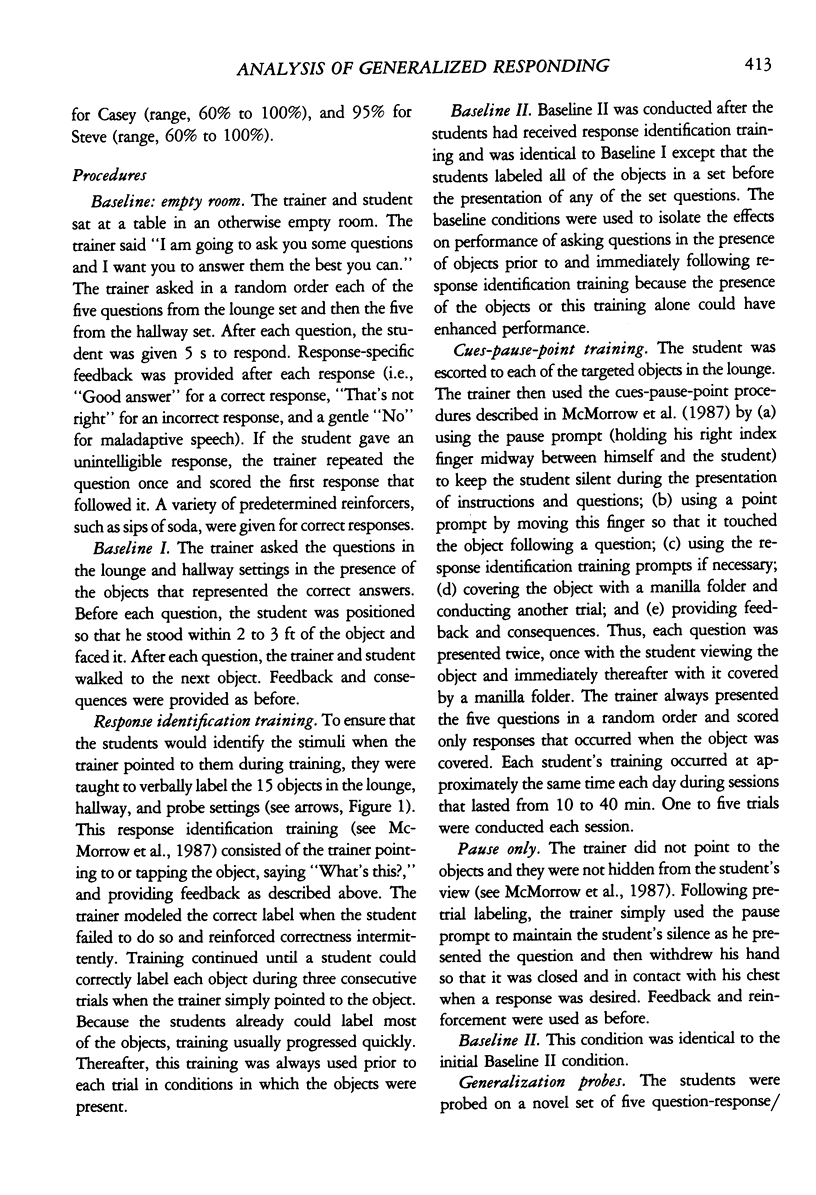
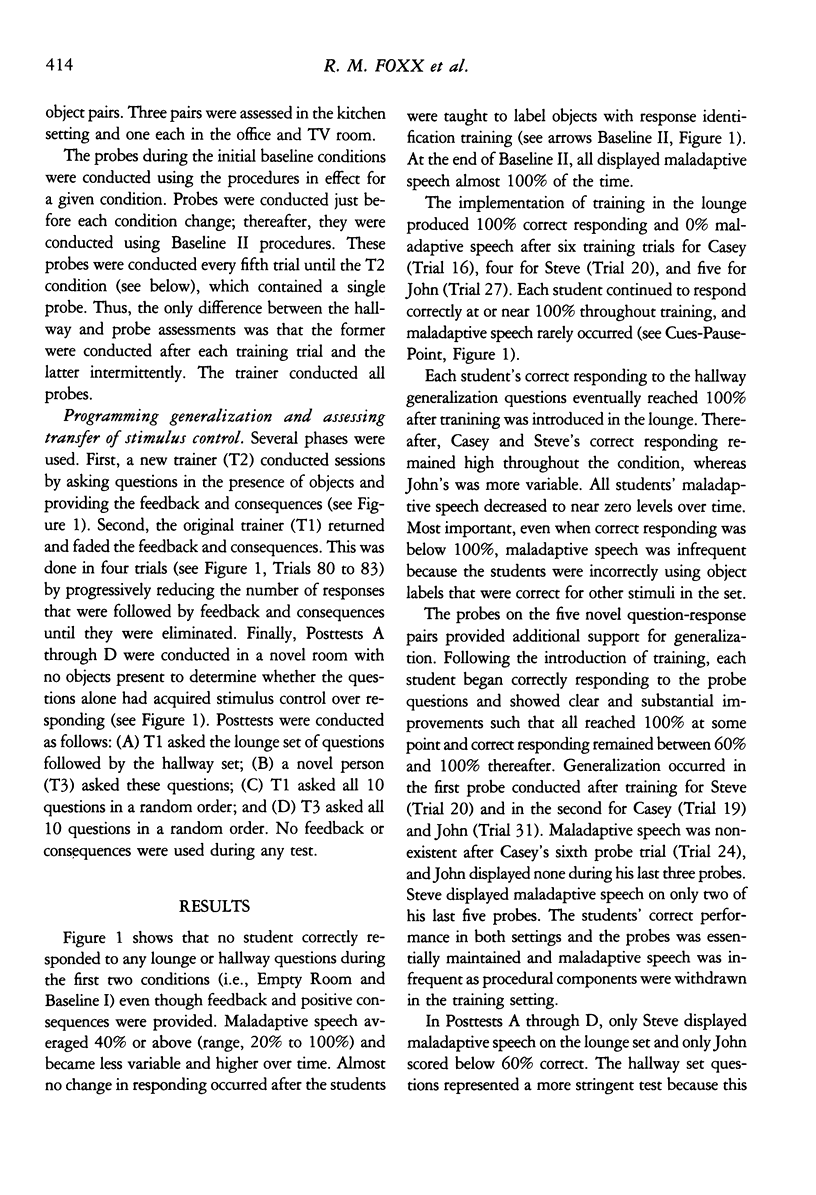
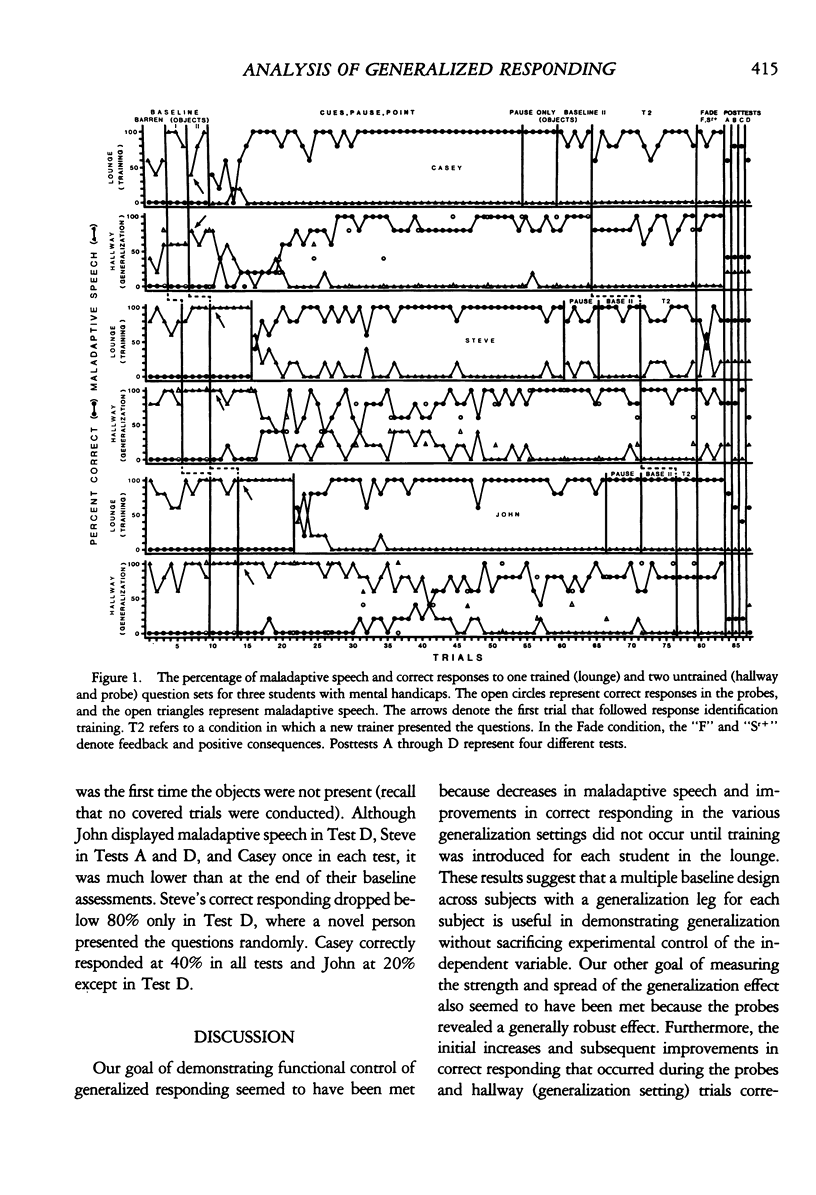
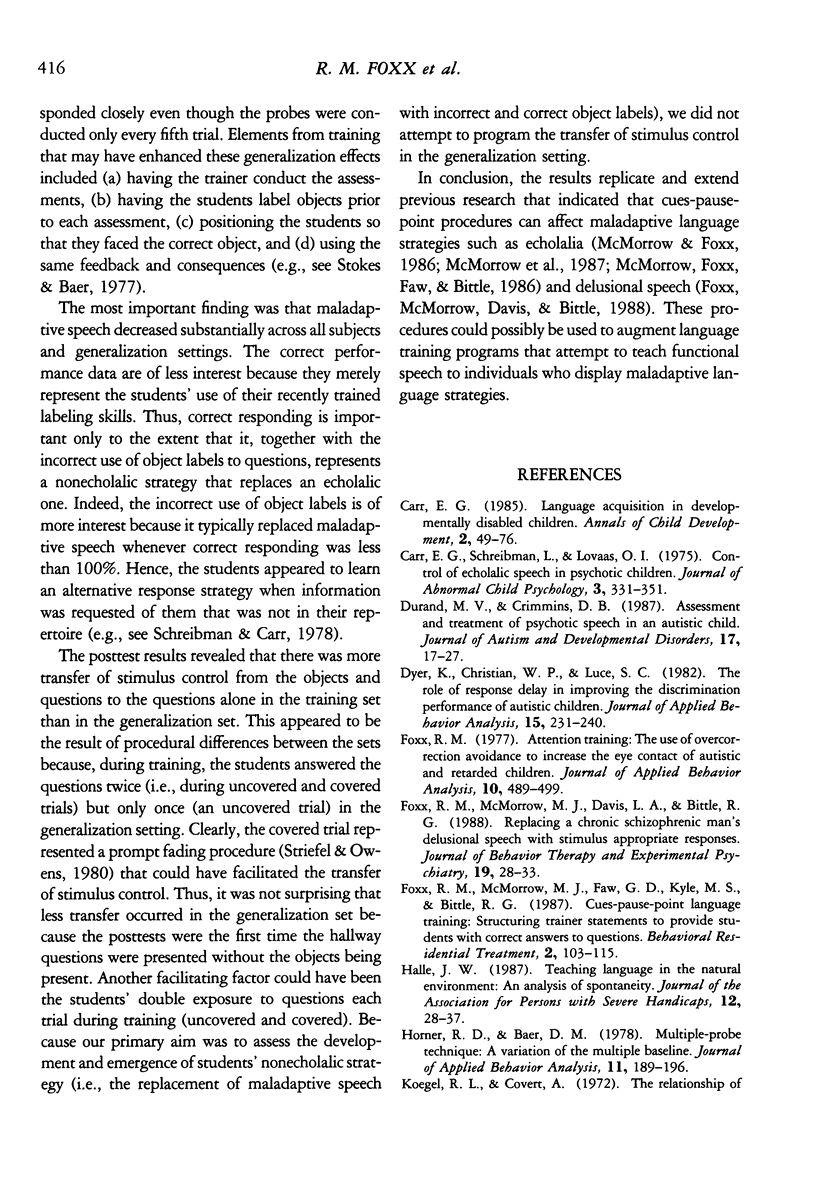
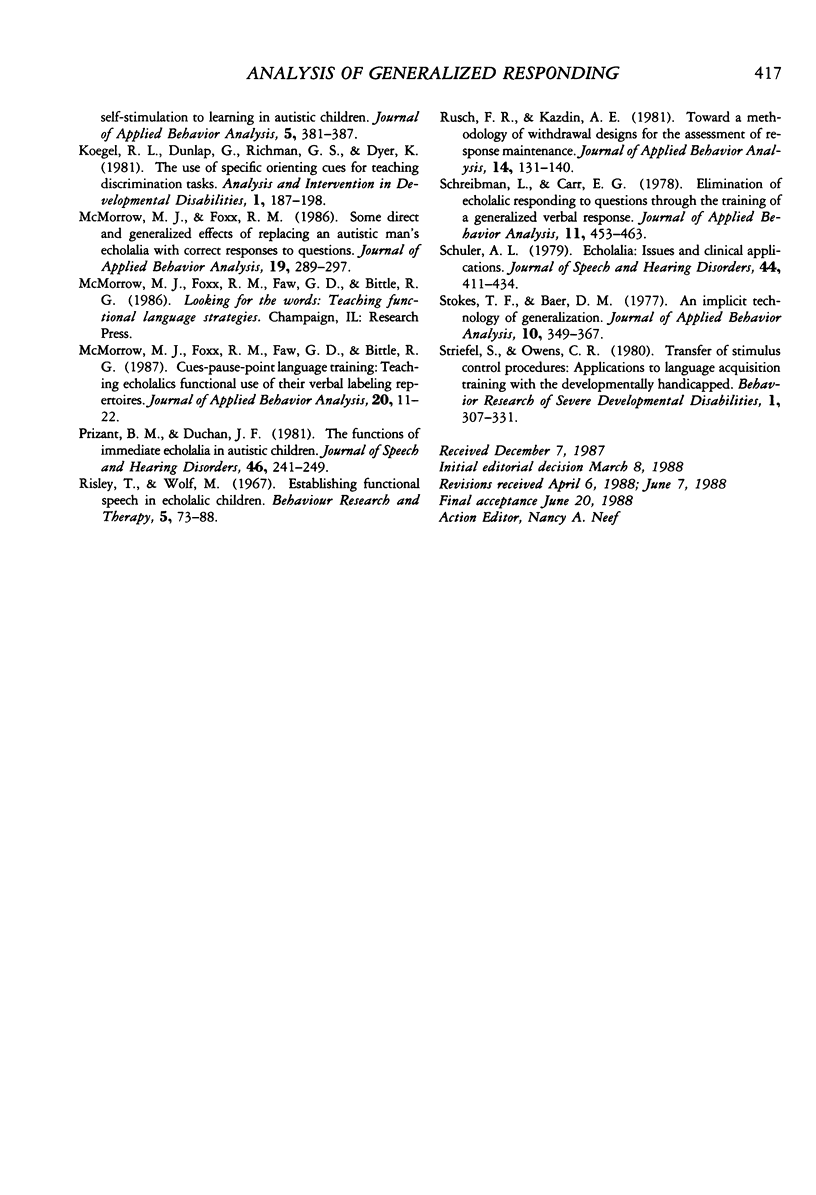
Selected References
These references are in PubMed. This may not be the complete list of references from this article.
- Carr E. G., Schreibman L., Lovaas O. I. Control of echolalic speech in psychotic children. J Abnorm Child Psychol. 1975;3(4):331–351. doi: 10.1007/BF00917420. [DOI] [PubMed] [Google Scholar]
- Durand V. M., Crimmins D. B. Assessment and treatment of psychotic speech in an autistic child. J Autism Dev Disord. 1987 Mar;17(1):17–28. doi: 10.1007/BF01487257. [DOI] [PubMed] [Google Scholar]
- Dyer K., Christian W. P., Luce S. C. The role of response delay in improving in the discrimination performance or autistic children. J Appl Behav Anal. 1982 Summer;15(2):231–240. doi: 10.1901/jaba.1982.15-231. [DOI] [PMC free article] [PubMed] [Google Scholar]
- Foxx R. M. Attention training: the use of overcorrection avoidance to increase the eye contact of autistic and retarded children. J Appl Behav Anal. 1977 Fall;10(3):489–499. doi: 10.1901/jaba.1977.10-489. [DOI] [PMC free article] [PubMed] [Google Scholar]
- Horner R. D., Baer D. M. Multiple-probe technique: a variation on the multiple baseline. J Appl Behav Anal. 1978 Spring;11(1):189–196. doi: 10.1901/jaba.1978.11-189. [DOI] [PMC free article] [PubMed] [Google Scholar]
- Koegel R. L., Covert A. The relationship of self-stimulation to learning in autistic children. J Appl Behav Anal. 1972 Winter;5(4):381–387. doi: 10.1901/jaba.1972.5-381. [DOI] [PMC free article] [PubMed] [Google Scholar]
- McMorrow M. J., Foxx R. M., Faw G. D., Bittle R. G. Cues-pause-point language training: teaching echolalics functional use of their verbal labeling repertoires. J Appl Behav Anal. 1987 Spring;20(1):11–22. doi: 10.1901/jaba.1987.20-11. [DOI] [PMC free article] [PubMed] [Google Scholar]
- McMorrow M. J., Foxx R. M. Some direct and generalized effects of replacing an autistic man's echolalia with correct responses to questions. J Appl Behav Anal. 1986 Fall;19(3):289–297. doi: 10.1901/jaba.1986.19-289. [DOI] [PMC free article] [PubMed] [Google Scholar]
- Prizant B. M., Duchan J. F. The functions of immediate echolalia in autistic children. J Speech Hear Disord. 1981 Aug;46(3):241–249. doi: 10.1044/jshd.4603.241. [DOI] [PubMed] [Google Scholar]
- Risley T., Wolf M. Establishing functional speech in echolalic children. Behav Res Ther. 1967 May;5(2):73–88. doi: 10.1016/0005-7967(67)90001-0. [DOI] [PubMed] [Google Scholar]
- Rusch F. R., Kazdin A. E. Toward a methodology of withdrawal designs for the assessment of response maintenance. J Appl Behav Anal. 1981 Summer;14(2):131–140. doi: 10.1901/jaba.1981.14-131. [DOI] [PMC free article] [PubMed] [Google Scholar]
- Schreibman L., Carr E. G. Elimination of echolalic responding to questions through the training of a generalized verbal response. J Appl Behav Anal. 1978 Winter;11(4):453–463. doi: 10.1901/jaba.1978.11-453. [DOI] [PMC free article] [PubMed] [Google Scholar]
- Schuler A. L. Echolalia: issues and clinical applications. J Speech Hear Disord. 1979 Nov;44(4):411–434. doi: 10.1044/jshd.4404.411. [DOI] [PubMed] [Google Scholar]
- Stokes T. F., Baer D. M. An implicit technology of generalization. J Appl Behav Anal. 1977 Summer;10(2):349–367. doi: 10.1901/jaba.1977.10-349. [DOI] [PMC free article] [PubMed] [Google Scholar]


